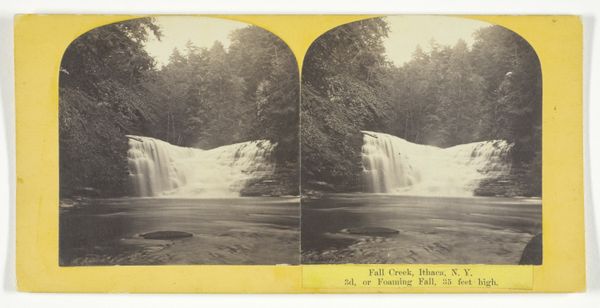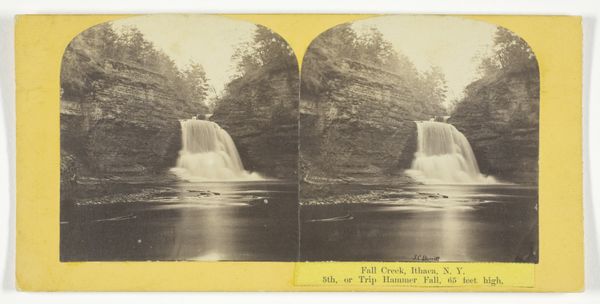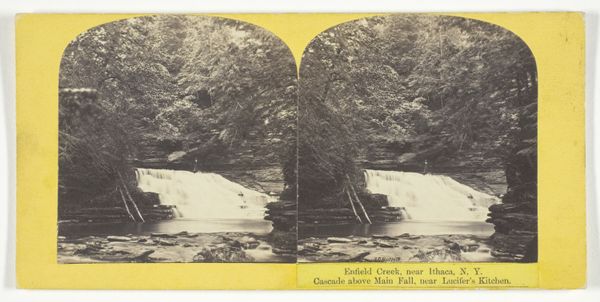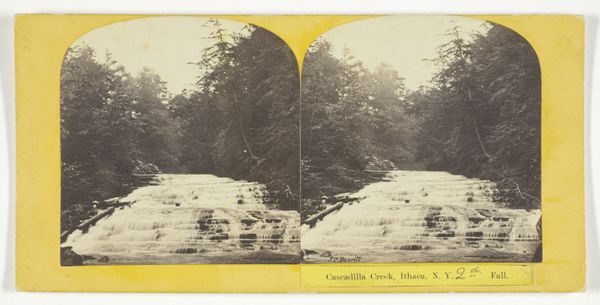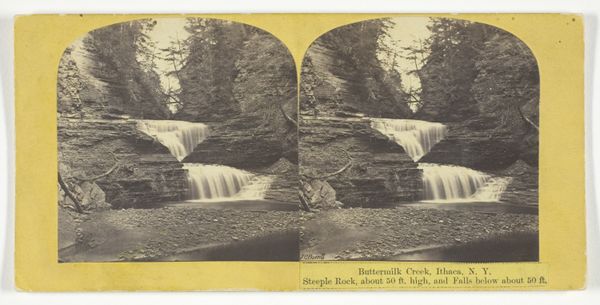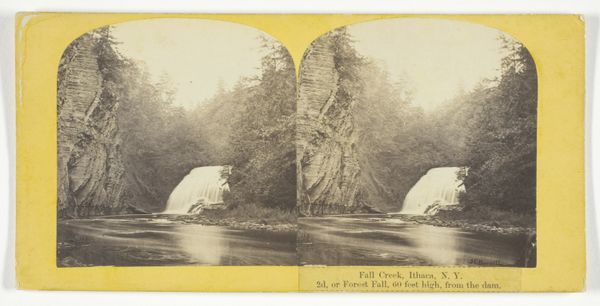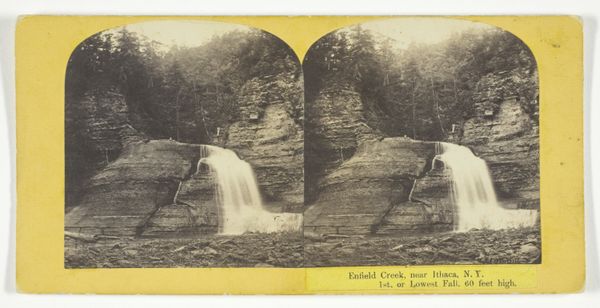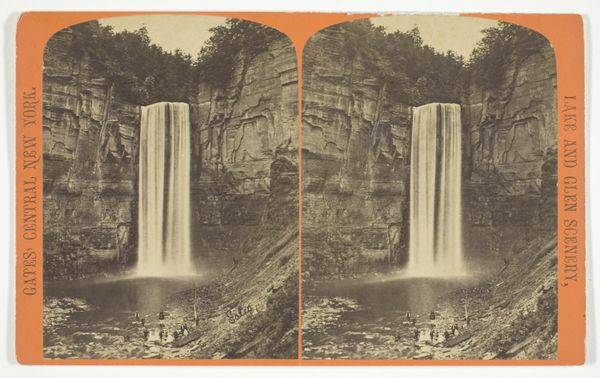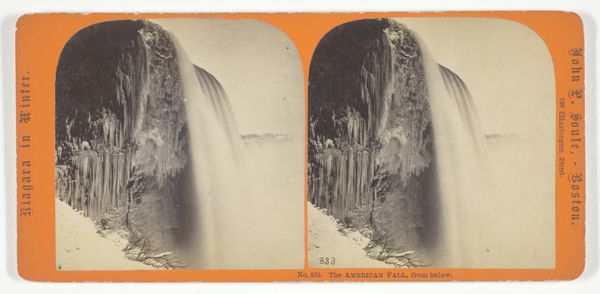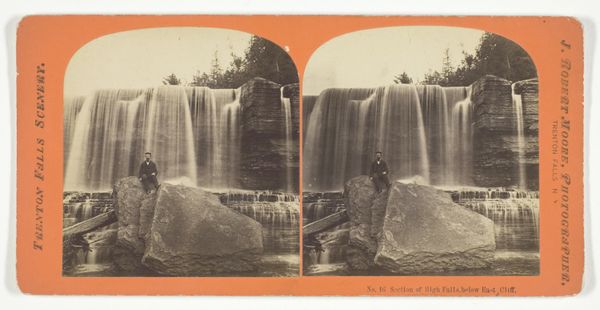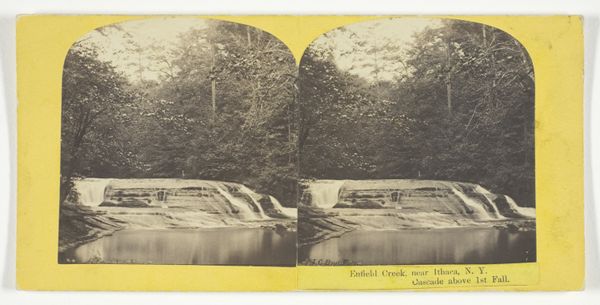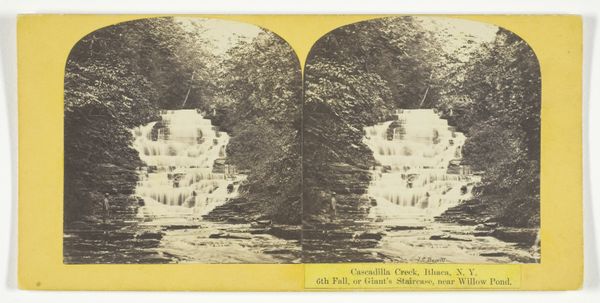
Fall Creek, Ithaca, N.Y. 4th, or Rocky Fall, 60 feet high 1860 - 1865
0:00
0:00
print, photography, gelatin-silver-print
#
16_19th-century
# print
#
landscape
#
natural composition
#
photography
#
gelatin-silver-print
#
hudson-river-school
Dimensions: 7.5 × 7.2 cm (each image); 8.4 × 17.1 cm (card)
Copyright: Public Domain
This stereoscopic image captures Fall Creek in Ithaca, New York. The waterfall is the dominant symbol, a powerful motif representing nature's force and the ceaseless flow of time. Waterfalls have long been potent symbols across cultures. Consider the cascade in Courbet's "Le Gué," where water embodies purity and renewal. We see it even in ancient Roman fountains, like the Trevi, where water symbolizes life and abundance. Yet, there’s also a darker side, a primordial fear of nature's overwhelming power, echoing through subconscious anxieties. The waterfall, much like the maelstrom, can be interpreted as a symbol of chaos, of a world beyond human control. The continuous resurfacing and reimagining of the waterfall, from ancient mythologies to modern art, highlights our enduring fascination with its dual nature as both life-giver and destructive force. Its symbolism constantly evolves.
Comments
No comments
Be the first to comment and join the conversation on the ultimate creative platform.
